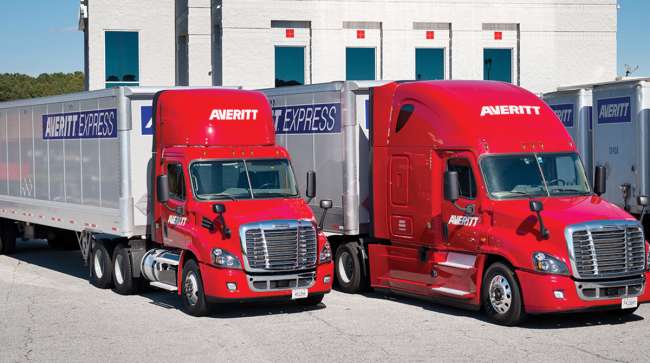Staff Reporter
Carriers Continue to Raise Wages Amid Driver Shortage

[Stay on top of transportation news: Get TTNews in your inbox.]
Trucking companies are continuing to increase driver pay as labor capacity remains a challenge amid strong demand.
Averitt Express on May 19 announced a pay increase for local drivers, shuttle drivers, diesel mechanics and dock associates, while Maverick Transportation announced May 11 higher pay for flatbed, glass, marine and dedicated drivers. WEL Cos. announced April 30 its drivers would see pay increase by 4 cents per mile.
“Our drivers have worked extremely hard during these unprecedented times of high demand and tight capacity, and we are proud to recognize them with this industry-leading pay package,” Maverick President John Culp said in a statement.

Next-level technologies hold the potential to enhance safety and efficiency in transportation, but it takes a lot of work behind the scenes to advance these ideas from concept to reality. We talk with Christoph Mertz of the Robotics Institute at Carnegie Mellon and Huei Peng of the University of Michigan. Hear a snippet above, and get the full program by going to RoadSigns.TTNews.com.
Maverick said its flatbed and glass over-the-road drivers would see an increase of 3 to 4 cents per mile. For student drivers, that takes starting pay up to 55 to 60 cents per mile, or an average of around $80,000 per year, the company said. Experienced drivers will earn 59 to 66 cents per mile. Those pay increases went into effect May 16.
“Our local driving and support associates are the champions of the communities we serve,” Barry Blakely, vice president of operations at Averitt, said in a May 19 statement about his company’s pay increases. “For 50 years, Averitt has been committed to serving our customers and our team, and this increase will ensure that we can continue to provide exceptional service in all areas.”
All three companies are following earlier increases with these latest pay bumps. The increase at WEL follows a 3 cent-per-mile increase from earlier this year, while Averitt on March 2 announced pay increases for regional truckload and flatbed drivers. Maverick on Jan. 3 announced a pay increase for flatbed, glass and dedicated drivers.
Averitt ranks No. 32 on the Transport Topics Top 100 list of the largest for-hire carriers in North America, and Maverick ranks No. 76.
While he sees these moves as a natural market reaction, American Trucking Associations Chief Economist Bob Costello told Transport Topics that financial incentives alone cannot fully address elevated demand levels
“There is so much going on here,” Costello said. “You can write a whole PhD thesis on this if you really wanted to. Things that come to mind include the natural market reaction to any situation where demand outstrips supply as price goes up. And so I am absolutely not surprised at all that pay is going up for drivers. It should go up, it will continue to go up. But it’s also sign-on bonuses and guaranteed minimum weekly pay. It’s all this sort of stuff. But as I say over and over and over, if this was only about pay, this would be easy to fix.”

Costello
Costello noted the exact number of drivers the industry lost last year is not clear yet, but when it comes to nonsupervisory and production occupations — including for-hire and nonlocal trucking — the industry lost 32,000 jobs last year. Most, but not all, of those jobs were drivers. So far this year the sector has only added 200 jobs.
“Back at the end of last year, we were actually at the height of all of this in terms of drivers coming back,” added Avery Vise, vice president of trucking research at FTR Transportation Intelligence, told TT. “The fourth quarter of last year trucking added almost 29,000 payroll jobs. And that’s actually the most that have been added in any three-month period in 25 years. That was actually the middle of what seemed to be a steady recovery.”
Vise noted that payroll hiring has slowed since the end of the year, and said over the past four months the industry has only added 1,400 payroll jobs. At the same time training remains an issue, which limits the supply of new drivers.

Vise
“It almost feels like that by the end of 2020, the trucking industry sort of brought back all the drivers who were readily willing to come back,” Vise said. “And now it is a much tougher job because a lot of drivers have moved on to other vocations and my understanding is we still haven’t restored the pipeline of new drivers.”
Costello noted that beyond pay and benefits, quality of life is an important consideration for recruiting drivers. He also sees retention as something carriers need to focus on. With the limited supply of new drivers, he said, companies are competing in the same constrained pool.
“I think it was a hole that we got dug into,” Costello said of last year. “Now that the vaccine is more prevalent and getting around, I think we can make some headway in this area. But what I’m saying is you’re not going to dig out of this hole — that training gap hole — anytime soon.”
Want more news? Listen to today's daily briefing below or go here for more info:

